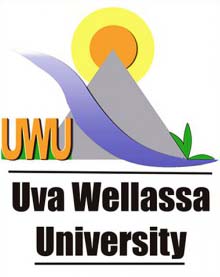01. The Impact of Natural Colourants on Quality Parameters of Cream Cheeses
C.U. Withanage, V.A. Wijesekara, D.M.O.E. Ulapane, W.V.V.R. Weerasingha*
*Department of Animal and Food Sciences Faculty of Agriculture, Rajarata University of Sri Lanka, Puliyankulama, Anuradhapura, Sri Lanka
INFORMATION
Journal Title : Journal of Technology and Value Addition
Volume : 5
Issue : 2
Page : 01– 21
Correspondence : vviraj@agri.rjt.ac.lk
ABSTRACT
Physiochemical, microbiological and sensory properties were investigated for cream cheese which fortified with natural colourants, 4% Hibiscus, 3% beet root, 9% carrot, and 2% blue pea over 14 days at 4℃ compared with colourless control. A decrease in lightness was observed over the storage, indicating pigment degradation. The highest (61.42 µg GAEmL-1) and lowest (24.04 µg GAEmL-1) Total Plate Count were observed in beet root and hibiscus incorporated cream cheese respectively, at the beginning and end of the storage. Since the coliform level was within the standard range the product safety was ensured. The highest sensory ranking for colour, aroma, texture and overall acceptability were observed in carrot incorporated cream cheese.
Keywords: Cream cheese, natural colourants, quality, storage
2. Calibrating Life Annuities for Life Insurance and Pension Fund Implementations: A Mathematical Model
G.M. Ogungbenle1*, A.B. Sogunro2 and O.E. Ogungbenle3
1Department of Actuarial Science, Faculty of Management Sciences, University of Jos, Nigeria
2 Department of Actuarial Science and Insurance, Faculty of Management Science,s University of Lagos, Nigeria
3Department of Physiology, Faculty of Natural Sciences, University of Ilorin, Nigeria
INFORMATION
Journal Title : Journal of Technology and Value Addition
Volume : 5
Issue : 2
Page : 22– 57
Correspondence : moyosiolorun@gmail.com
ABSTRACT
Annuity schemes are developed to provide different financial retirement instruments to address the problems of income of retirees. Annuities schemes provide additional financial retirement planning option with minimal credit risk and a certain level of liquidity to the retirees by turning a lump-sum premiums into life time streams of monthly income at a reasonable and a stable rate. In this study we establish a mathematical framework to construct an actuarial model that enables us to estimate life annuity schemes. In order to help actuaries and life office in the administration of pension schemes, the objectives of this study are anchored on the followings to (i) construct numerical estimations of life annuity through single life parameterization of Makeham’s law through algebraic technique (ii) apply the mean value theorem to construct modification theorems for
under the framework of policy alterations (iii) apply the commutation function to develop mathematical model for the actuarial cash inflows and outflows. It is observed from the computational results that the trend of annuities progressively reduces downwards from ages
. This trend justifies the mathematical behavior that the continuous annuity integral
is a decreasing function. To demonstrate how long the annuitants are covered by the decreasing life insurance scheme, our results presents the terms of the deceasing whole life annuity scheme across the ages. The older annuitants will pay a higher percentage of premium for the whole life insurance scheme and consequently can only enjoy a shorter term of insurance coverage since at senescence, annuitants earn higher payments and have a higher mortality rate. The smaller the interest rate becomes, the bigger the proportion the of the term insurance and smaller costs for the life annuity hence proportions of the mortality component are usually higher for the old annuitants.
Keywords: Annuitants, commutation function, gamma functions, parameterization, whole life annuity
3. Comparative Study on Three Selected Culture Methods for Padina antillarum, on the Coast of Mannar Island, Sri Lanka
B.V.A.S.M. Bambaranda1*, P. Thivishan1, J.A. Athula1, I.M.C.D. Bandara1, B. Nirooparaj2
1Department of Animal Science, Uva Wellassa University, Badulla 90000, Sri Lanka
2National Aquaculture Development Authority of Sri Lanka, No 41/1, New Parliament Road, Pelawaththa, Battaramulla, Sri Lanka
INFORMATION
Journal Title : Journal of Technology and Value Addition
Volume : 5
Issue : 2
Page : 58– 79
Correspondence : manori@uwu.ac.lk
ABSTRACT
Brown seaweed of Padina antillarum is a raw material for many industries worldwide. There is a tremendous potential to utilize this resource in various sectors in Sri Lanka, however, the naturally accessible stocks are insufficient for industrial use, and the cultivation methods of this species have not been researched. The aim of this research was the comparative assessment of the cultivation of P. antillarum using commonly practiced three cultivation methods in Sri Lanka. Raft culture, longline culture, and bag culture methods were used in the study with three replicates in an open sea area of Mannar Island. A wet weight of 100 g P. antillarum was stocked in each replicate and maintained for 42 days measuring water quality and environmental parameters. The culture systems were monitored and cleaned by removing epiphytes and debris every day. Weekly Growth Rate (WGR) and Absolute Growth Rate (AGR) were calculated and data were analyzed by one-way ANOVA. It indicated a significant difference between the three culture methods (P<0.05) in WGR and AGR. The highest mean WGR showed in the raft culture with 11.11±2.82 gweek-1 and the lowest mean WGR was shown in the bag culture as 5.19±1.67 gweek-1. The highest AGR showed in raft culture was 65.69±0.89 g week-1 and the lowest in bag culture was 31.39±057 gweek-1. The present study showed that raft culture is the best method out of the experimented three culture methods which can be practiced in future farming activities on the coast of Mannar Island, Sri Lanka.
Keywords: Culture methods, growth rate performance, Mannar Island, Padina antillarum, Seaweed cultivation
4. Physicochemical, Textural and Sensory Properties of Cottage Cheese Enriched with Jackfruit Seed (Artocarpus heterophyllus) Powder
K.G.T.S.D. Bandara and K.M.G.M.M. Kariyawasam*
Department of Biosystems Technology, Faculty of Technological Studies, Uva Wellassa University, Badulla 90000, Sri Lanka
INFORMATION
Journal Title : Journal of Technology and Value Addition
Volume : 5
Issue : 2
Page : 80 – 93
Correspondence : menaka.k@uwu.ac.lk
ABSTRACT
The application of Jackfruit seed powder in convenience foods could boost the commercial value of Jackfruit seeds while also helping to meet the population’s protein needs. The objective of the present study was to evaluate the feasibility of fortifying cheese with jackfruit seed powder to improve its nutritional, functional, and sensory characteristics. Experimental cottage cheese samples were prepared with whole milk supplemented with 1%, 1.5% and 2% jackfruit seed powder (JSP). The products were stored at 4℃ for three weeks. Based on the sensory results, the cottage cheese sample with 1.5% jackfruit seed powder (JS2) was chosen as the best level for cottage cheese preparation, which had the highest textural, flavor and overall acceptability scores. The addition of jackfruit seed powder to cheese samples greatly improves the protein content (25.73±0.05%) while having no effect on the ash or fat content. There was no significant difference in antioxidant activity of JS2 at 7 days of refrigerated storage, while value was comparable to the control sample (67.79±3.66%). Moreover, the products were analyzed for textural properties and there was no significant difference in hardness, adhesiveness, cohesiveness, springiness, gumminess, and chewiness when compared to the control sample. These findings confirmed that adding jackfruit seed powder to cottage cheese can enhance its protein content while increasing sensory attributes, implying that it has the potential to be employed as a protein supplement in the dairy sector.
Keywords: Antioxidant activity, cottage cheese, jackfruit seed powder, protein enrichment, value addition
5. Biotransformation of Soybean Residuals into Vermicompost by Red Earthworms (Eisenia fetida)
D. Prapaharan, W.K.N.S. Dias and K.M.C. Fernando*
Department of Crop Science, Faculty of Agriculture, University of Ruhuna, Mapalana, Kamburupitiya 81100, Sri Lanka
INFORMATION
Journal Title : Journal of Technology and Value Addition
Volume : 5
Issue : 2
Page : 94 – 106
Correspondence : menaka@crop.ruh.ac.lk
ABSTRACT
The effective management of organic solid wastes presents a growing challenge due to population growth, intensified agricultural practices, and industrialization. Vermicomposting, a cost-effective method utilizing earthworms, has emerged as a viable solution for the disposal of organic waste. This study investigated the potential of different mixtures of soybean residuals (SR) and cow dung (CD) on vermicompost (VC) production. A completely randomized design with four replicates was used to allocate six treatments i.e; T1- 100% SR, T2- 80% SR + 20% CD, T3- 60% SR+ 40% CD, T4- 40% SR + 60% CD, T5- 20% SR + 80% CD, T6- 100% CD. The results showed significant differences in the production of live biomass of earthworms, weight of the harvested VC, pH, salinity and total dissolved solids (TDS), except for electrical conductivity among the treatments. The study demonstrated the potential of bioconversion of SR using Eisenia fetida, when combined with different proportions of CD. However, the current vermicomposting process of SR must be optimized as pH and electrical conductivity values were not among the SLS recommended range for compost in some treatments.
Keywords: Live biomass of earthworms, organic solid waste, red earthworm, vermicomposting


